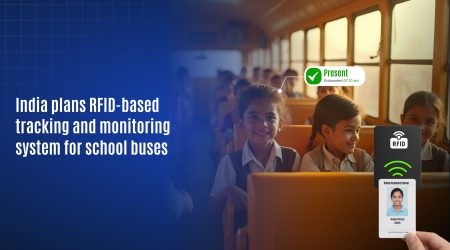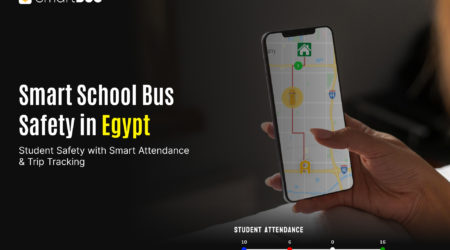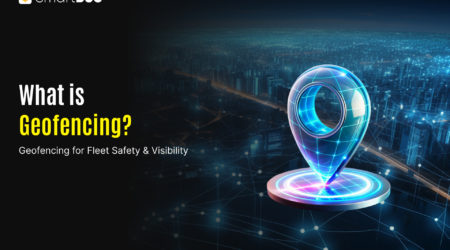School District : Reducing Bus Delays by 40% with Real-Time Tracking
Ensuring that school buses run on time is crucial for the smooth operation of any school district. Timely bus arrivals and departures affect students’ learning, parents’ peace of mind, and the overall efficiency of school operations. However, many districts struggle with bus delays due to various factors such as traffic, weather conditions, and communication gaps. This blog explores how advanced school bus monitoring software with real-time tracking capabilities can help overcome these challenges.
The Problem: Frequent Bus Delays
Many school districts face frequent bus delays, causing a ripple effect of problems: students arrive late to school, disrupting classes; parents become anxious and frustrated, unsure of when their children will arrive or be picked up; and school administrators struggle to manage the chaos, often fielding multiple complaints daily. The lack of real-time information makes it nearly impossible to address these issues promptly.
Our Solution: Advanced School Bus Monitoring Software
Implementing advanced school bus monitoring software with real-time tracking capabilities can transform operations. Here’s how it works:
- Live GPS Tracking: Each bus is fitted with a GPS device linked to a central monitoring system. Parents and school staff can view the exact location of the buses in real-time through an easy-to-use app. This reduces uncertainty and wait times, ensuring everyone knows exactly where the buses are.
- Geofencing: Virtual boundaries are set around schools, bus stops, and other key locations. Automated alerts are triggered when buses enter or leave these zones. This enables better route management and timely notifications to parents, ensuring they are always informed about the bus’s status.
- Driver Behavior Monitoring: The software monitors driving behaviors such as speed and sudden stops. Feedback is provided to drivers, promoting safer driving practices and reducing delays caused by traffic violations or unsafe driving. This helps maintain a high standard of safety and punctuality.
- Route Optimization: The system analyzes traffic conditions and suggests the most efficient routes. Buses follow optimized routes, cutting down travel time and ensuring timely arrivals. This leads to a more efficient transportation system with fewer delays.
- Parent and School Alerts: Real-time notifications are sent to parents and school staff via SMS, email, and the app. Everyone stays informed about bus locations and any delays, reducing anxiety and improving communication. This constant flow of information keeps everyone updated and prepared.
- Maintenance Reminders: The software tracks schedules for maintenance and sends reminders. Regular maintenance reduces the likelihood of breakdowns, ensuring smoother operations. Well-maintained buses mean more reliable service and fewer disruptions.
⟶ Top 8 School Bus Routing Software to Reduce Delays.
Implementation: Step-by-Step Guide:
- Install GPS Devices: Equip each bus with a GPS device to enable tracking.
- Set Up Geofences: Define virtual boundaries around key locations such as schools and bus stops.
- Configure Driver Monitoring: Activate features to monitor driving behavior, ensuring safety and compliance.
- Optimize Routes: Use the system to analyze and set the best routes based on current traffic conditions.
- Enable Alerts: Set up notifications to keep parents and staff informed about bus statuses.
- Schedule Maintenance: Use the software to track bus usage and schedule regular maintenance reminders.
Best Practices for Smooth Implementation:
- Training: Ensure all staff are trained on how to use the software effectively. This helps in maximizing the benefits and avoiding common issues.
- Communication: Keep parents and staff informed about the new system and its benefits. Clear communication ensures everyone understands and supports the implementation.
- Regular Updates: Keep the software and GPS devices updated to ensure optimal performance. Regular updates help in maintaining the efficiency and reliability of the system.
Impact and Results
Enhanced Communication:
Parents feel more at ease knowing they will receive timely updates on bus locations and expected arrival times. This transparency in communication is a major relief for parents who no longer have to guess or constantly call the school for updates.
Improved Punctuality:
With optimized routes and real-time tracking, buses adhere more closely to their schedules, ensuring students arrive on time for classes. The reduction in delays means that students are no longer missing out on important instructional time, leading to a better overall educational experience.
Increased Safety:
Monitoring driver behavior leads to safer driving practices, reducing the likelihood of accidents. Parents and school administrators can be confident that buses are being driven safely, providing peace of mind and ensuring student safety.
Efficient Operations:
School administrators can quickly address any issues on the route, whether it is traffic, road closures, or bus breakdowns, ensuring minimal disruption. The ability to respond promptly to any situation improves the overall efficiency of the school’s transportation system.
Case Studies or User Testimonials:
- Case Study: A school district reported a 40% reduction in bus delays after implementing the software. This significant improvement highlights the effectiveness of the system.
- Testimonial: “Since we started using the advanced school bus monitoring software, our buses are always on time, and parents are much happier. The system has made a noticeable difference in our operations.”
Tips for Success
Maximizing the Benefits:
- Regular Training: Keep staff trained and updated on new features. Continuous learning ensures that the team can make the most out of the software.
- Active Monitoring: Continuously monitor the system to ensure it’s functioning correctly. Regular checks help in identifying and resolving issues promptly.
Common Mistakes to Avoid:
- Ignoring Updates: Always update the software and devices to avoid malfunctions. Staying up-to-date ensures the system runs smoothly.
- Poor Communication: Ensure clear communication with parents and staff about the system’s benefits and usage. Clear information helps in gaining support and understanding from all stakeholders.
Conclusion
Choosing the right advanced school bus monitoring software is crucial for any school district aiming to reduce bus delays and enhance overall efficiency. Real-time tracking, geofencing, driver behavior monitoring, route optimization, and timely alerts are key features that can make a significant difference. By implementing these technologies, schools can improve their transportation systems, ensuring student safety, punctuality, and peace of mind for parents and staff.


